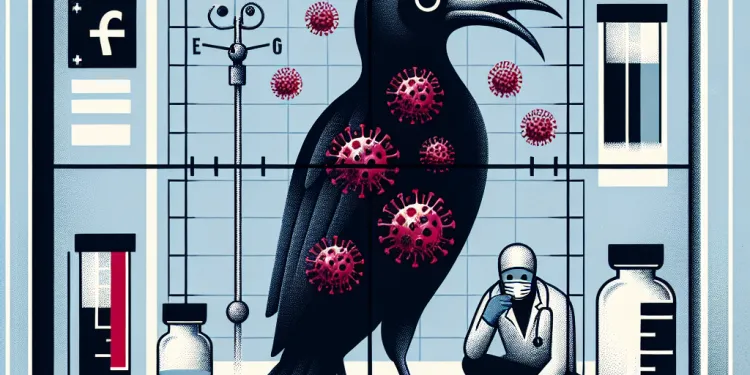
Find Help
More Items From Ergsy search
-

Are there vaccines for the bubonic plague?
Relevance: 100%
-

What is Bubonic Plague?
Relevance: 81%
-

What is the bubonic plague?
Relevance: 80%
-

How can the bubonic plague be treated?
Relevance: 78%
-

How is the bubonic plague transmitted?
Relevance: 77%
-

Can the bubonic plague be prevented?
Relevance: 76%
-

Is the bubonic plague contagious between humans?
Relevance: 76%
-

What are the symptoms of the bubonic plague?
Relevance: 74%
-

Where did the bubonic plague originate?
Relevance: 71%
-

What is the mortality rate of untreated bubonic plague?
Relevance: 70%
-

Did the bubonic plague affect only Europe?
Relevance: 69%
-

What advancements have been made in understanding the bubonic plague?
Relevance: 69%
-

Can the bubonic plague become resistant to antibiotics?
Relevance: 68%
-

How was the bubonic plague controlled historically?
Relevance: 68%
-

What historical event is the bubonic plague known for?
Relevance: 67%
-

Are there modern outbreaks of bubonic plague?
Relevance: 53%
-

What animals are natural carriers of the bubonic plague?
Relevance: 48%
-

What public health measures are important for managing the plague?
Relevance: 40%
-

What is a bubo?
Relevance: 35%
-

Is the bubonic plague still a global health threat?
Relevance: 28%
-

Are there vaccines for meningitis?
Relevance: 25%
-

Are vaccines safe?
Relevance: 25%
-

What is a vaccine?
Relevance: 25%
-

Is there a vaccine for norovirus?
Relevance: 25%
-

Is there a vaccine for gonorrhoea?
Relevance: 25%
-

Is there a vaccine for impetigo?
Relevance: 25%
-

What is a subunit vaccine?
Relevance: 24%
-

What is a live-attenuated vaccine?
Relevance: 24%
-

Is the shingles vaccine safe?
Relevance: 24%
-

Children's Vaccination Schedule
Relevance: 24%
-

How do vaccines work?
Relevance: 24%
-

Why are vaccines important?
Relevance: 24%
-

Is there a vaccine for the Zika virus?
Relevance: 24%
-

Are vaccines linked to autism?
Relevance: 24%
-

Is there a vaccine for Lyme disease?
Relevance: 24%
-

Is there a vaccine for Marburg virus?
Relevance: 24%
-

Are there vaccines available for HIV?
Relevance: 24%
-

What if I'm not eligible for a free flu vaccine, can I still get vaccinated?
Relevance: 23%
-

What are the different types of vaccines?
Relevance: 23%
-

Can everyone receive vaccines?
Relevance: 23%
Understanding the Bubonic Plague
The bubonic plague is an infectious disease caused by the Yersinia pestis bacterium. Historically known as the Black Death, it devastated Europe during the 14th century, wiping out an estimated one-third of the continent's population. The disease primarily spreads through fleas that live on rodents, although human-to-human transmission can occur under certain conditions.
Current Situation of the Bubonic Plague
While the bubonic plague is no longer the threat it once was in the Middle Ages, it still appears in some regions of the world today, including parts of Africa, Asia, and the Americas. Modern medicine has rendered the plague both treatable and preventable, with antibiotics effectively combating the infection if administered promptly. Early diagnosis and treatment are crucial in reducing the risk of severe complications or death.
Vaccines for the Bubonic Plague
Currently, there is no widely available vaccine specifically for the prevention of the bubonic plague. Although there have been vaccines developed in the past, such as the killed whole-cell plague vaccine, they are not in common use today. This is partly due to the effectiveness of modern antibiotics in treating the disease, which has reduced the necessity for a vaccine.
Research efforts continue to focus on developing new vaccines, especially considering concerns about bioterrorism and the potential use of Yersinia pestis as a biological weapon. In recent years, experimental vaccines have been developed and tested with promising results. Researchers are exploring various approaches, including subunit vaccines, live-attenuated vaccines, and DNA vaccines, to provide effective and long-lasting immunity against the plague.
Public Health Measures and Future Prospects
The primary means of preventing the spread of the bubonic plague, especially in regions where it is still present, involves public health measures and awareness. Controlling rodent populations and managing potential sources of infection are key strategies. In addition, educating the public on recognizing symptoms and seeking early treatment plays an important role.
In the UK, and indeed much of the developed world, the risk of encountering the bubonic plague is minimal. However, continued surveillance and research are crucial to ensuring preparedness against potential outbreaks or bioterror threats. If ongoing research successfully develops a reliable and widely available vaccine, it could further enhance the prevention strategy against the plague in both human and veterinary contexts.
Frequently Asked Questions
Are there vaccines available for the bubonic plague?
Yes, there have been vaccines developed for the bubonic plague, but they are not widely used.
Why isn't the plague vaccine widely available today?
Because the risk of contracting the bubonic plague is low in most parts of the world, there is not a high demand for the vaccine.
Who might need a bubonic plague vaccine?
The vaccine may be recommended for people who are at high risk of exposure, such as laboratory personnel or individuals living in areas where the plague is common.
How effective is the bubonic plague vaccine?
Plague vaccines can be effective in preventing the disease, but their exact efficacy can vary depending on the type of vaccine and individual circumstances.
What types of plague vaccines have been developed?
There have been several types of vaccines developed, including killed and live attenuated vaccines, although many are no longer in production or use.
Can the plague vaccine cause side effects?
Like all vaccines, plague vaccines can cause side effects, which are generally mild and may include soreness at the injection site or mild fever.
Is the plague vaccine part of routine immunizations?
No, plague vaccines are not part of routine immunization schedules because the disease is rare.
Are there any countries that recommend the plague vaccine for travelers?
Most countries do not recommend the plague vaccine for travelers because the risk is low, but recommendations may change based on specific travel advisories.
How is the plague vaccine administered?
Typically, the vaccine is administered via injection, similar to other vaccines.
Have plague vaccines been used historically?
Yes, plague vaccines have been used in the past, particularly during outbreaks or among high-risk groups.
Is it possible to contract the plague even after vaccination?
While vaccination reduces the risk, no vaccine offers 100% protection, so it is still possible to contract the plague even after vaccination.
Why was the plague vaccine developed?
The vaccine was developed as a preventive measure to protect those at high risk and to manage outbreaks more effectively.
Are there any modern medical treatments for the bubonic plague?
Yes, modern antibiotics are effective at treating the bubonic plague if administered promptly after symptoms begin.
Is there ongoing research for new plague vaccines?
Yes, research is ongoing to develop newer and more effective plague vaccines.
Can tourists contract the bubonic plague?
While rare, it's possible for tourists to contract the plague when visiting areas where it is more common, such as certain parts of Africa, Asia, or the United States.
What are the symptoms of the bubonic plague?
Symptoms include fever, chills, headache, fatigue, and swollen lymph nodes, known as buboes.
How is the plague transmitted?
The plague is primarily transmitted through the bite of infected fleas or contact with infectious bodily fluids or tissues.
What precautions can prevent plague infection aside from vaccination?
Precautions include avoiding contact with wild rodents, using insect repellent, and taking prophylactic antibiotics if recommended by health authorities after exposure.
How does the risk of plague compare today to historical periods?
The risk today is significantly lower due to improved sanitation, healthcare, and living conditions.
Where can I find more information about the bubonic plague and vaccines?
You can find more information from public health organizations like the World Health Organization (WHO) or the Centers for Disease Control and Prevention (CDC).
Useful Links
- Ergsy carfully checks the information in the videos we provide here.
- Videos shown by Youtube after a video has completed, have NOT been reviewed by ERGSY.
- To view, click the arrow in centre of video.
- Most of the videos you find here will have subtitles and/or closed captions available.
- You may need to turn these on, and choose your preferred language.
- Go to the video you'd like to watch.
- If closed captions (CC) are available, settings will be visible on the bottom right of the video player.
- To turn on Captions, click settings .
- To turn off Captions, click settings again.
More Items From Ergsy search
-

Are there vaccines for the bubonic plague?
Relevance: 100%
-

What is Bubonic Plague?
Relevance: 81%
-

What is the bubonic plague?
Relevance: 80%
-

How can the bubonic plague be treated?
Relevance: 78%
-

How is the bubonic plague transmitted?
Relevance: 77%
-

Can the bubonic plague be prevented?
Relevance: 76%
-

Is the bubonic plague contagious between humans?
Relevance: 76%
-

What are the symptoms of the bubonic plague?
Relevance: 74%
-

Where did the bubonic plague originate?
Relevance: 71%
-

What is the mortality rate of untreated bubonic plague?
Relevance: 70%
-

Did the bubonic plague affect only Europe?
Relevance: 69%
-

What advancements have been made in understanding the bubonic plague?
Relevance: 69%
-

Can the bubonic plague become resistant to antibiotics?
Relevance: 68%
-

How was the bubonic plague controlled historically?
Relevance: 68%
-

What historical event is the bubonic plague known for?
Relevance: 67%
-

Are there modern outbreaks of bubonic plague?
Relevance: 53%
-

What animals are natural carriers of the bubonic plague?
Relevance: 48%
-

What public health measures are important for managing the plague?
Relevance: 40%
-

What is a bubo?
Relevance: 35%
-

Is the bubonic plague still a global health threat?
Relevance: 28%
-

Are there vaccines for meningitis?
Relevance: 25%
-

Are vaccines safe?
Relevance: 25%
-

What is a vaccine?
Relevance: 25%
-

Is there a vaccine for norovirus?
Relevance: 25%
-

Is there a vaccine for gonorrhoea?
Relevance: 25%
-

Is there a vaccine for impetigo?
Relevance: 25%
-

What is a subunit vaccine?
Relevance: 24%
-

What is a live-attenuated vaccine?
Relevance: 24%
-

Is the shingles vaccine safe?
Relevance: 24%
-

Children's Vaccination Schedule
Relevance: 24%
-

How do vaccines work?
Relevance: 24%
-

Why are vaccines important?
Relevance: 24%
-

Is there a vaccine for the Zika virus?
Relevance: 24%
-

Are vaccines linked to autism?
Relevance: 24%
-

Is there a vaccine for Lyme disease?
Relevance: 24%
-

Is there a vaccine for Marburg virus?
Relevance: 24%
-

Are there vaccines available for HIV?
Relevance: 24%
-

What if I'm not eligible for a free flu vaccine, can I still get vaccinated?
Relevance: 23%
-

What are the different types of vaccines?
Relevance: 23%
-

Can everyone receive vaccines?
Relevance: 23%